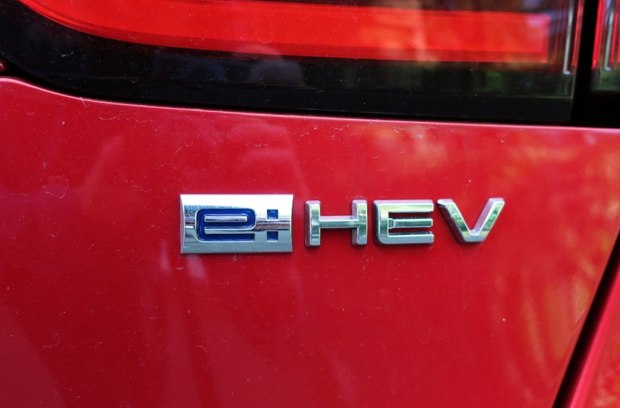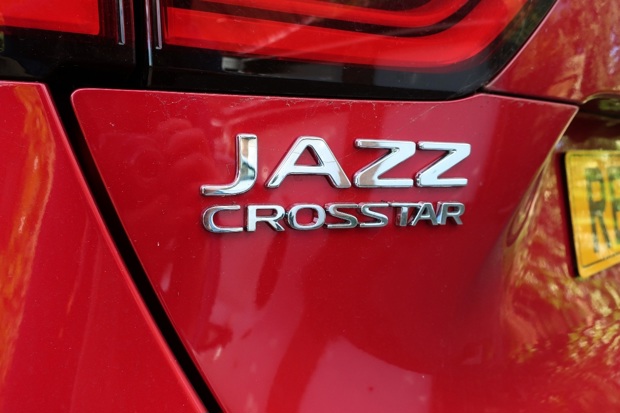Our Honda Jazz Crosstar arrives
We get to grips with our new Honda hybrid.

Date: 5 October 2020 | Current mileage: 549 miles | Claimed economy: 58.9mpg | Actual economy: 55.3mpg
Ah, the Honda Jazz. The preserve of pensioners in every supermarket and National Trust car park across the country. Right? Well, that’s an image Honda is attempting to change with the new Jazz. Which is why, alongside the latest model, Honda has introduced what it describes as the ‘sporty’ Jazz Crosstar. The word sporty working very hard there...
So what is it? Well if you remember the Rover Streetwise - and I think we’ll all agree that is an icon of British motoring - it’s a similar idea (see also Ford Fiesta Active, Vauxhall Viva Rocks, that weird Citroen C3 XTR from years ago, etc). ‘Made for the urban jungle’ is how Honda describes it, impressively without a hint of parody. It’s basically a Jazz with a lot of plastic bits stuck on. And we’re going to be running one for six months.
As well as a new look, there are other big changes for the Jazz. For starters, it’s only available with hybrid power now. Honda has ditched the conventional 1.3-litre i-VTEC petrol of the old model and replaced it with a new hybrid system - what it calls e:HEV. It sounds posh but Honda is, of course, no stranger to hybrids. In fact, there was a Honda Jazz Hybrid in 2011 and Honda sold the Insight until 2014.
It’s not a plug-in hybrid, instead, Honda has stuck to the traditional hybrid system with a 1.5-litre petrol engine working alongside two electric motors and a lithium-ion battery. The gearbox is the classic CVT affair - there’s no manual choice any longer.

Of course, few people choose a Jazz because it’s sporty, despite how much Honda wants to appeal to a younger buyer. We’ve chosen to run a Jazz because of its practicality but mainly it’s cheap to run. First impressions of the hybrid system are that it’s smooth if not quick, but what really appeals is the 50+mpg we’re already seeing. Economy win.
Then of course there’s the versatility of the Jazz. For a small car, it’s incredibly practical with the clever Magic Seats - meaning we’ll be able to carry all sorts of house plants from the garden centre when we’re hanging with our pensioner crew.
We’ve chosen the fetching Premium Red Crystal Metallic two-tone paint (a £950 option) for our Honda Jazz. Mainly because there aren’t really that many other colours. But that’s it in terms of options.
The result is a Honda Jazz that somehow costs £24,355. Yes, that’s not a typo. That’s what happens when you go for the top of the range model. True it’s well equipped for that - the Crosstar coming with plenty of bells and whistles, but we think that’s a lot of money. It also means we’re expecting a lot from the Jazz Crosstar over the next few months.
Top marks for economy in our hybrid Honda
Georgia discusses the Jazz Crosstar's high fuel economy figures, as well as an unusual noise.

Date: 19 October 2020 | Current mileage: 1466 | Claimed economy: 58.9mpg | Actual economy: 53.7mpg
There are many reasons people lean towards certain cars. Be it the looks, the performance, the reputation - or, for those of us who are more budget-conscious, fuel economy figures. As mentioned in a previous update, we chose the Jazz because it’s cheap to run, especially for those who who cover mostly town miles.
Despite the hybrid system not being that quick, we've seen fuel economy of about 54mpg since running the Jazz Crosstar. The 1.5-litre petrol engine works alongside two electric motors and a lithium-ion battery, meaning when we're doing city speeds (30mph and under) or sat in slow moving traffic - we aren't using any fuel.
Unless the car is cold, that is - but that's a topic for another update...
The hybrid setup is the only option in the Jazz, so for those who cover a majority of journeys on higher speed roads, the Jazz might not be what you're looking for. Saying that, despite living in a city, we do a considerable number of journeys on the motorway and still see 50+mpg.
Our relatively silent Jazz Crosstar emits this unusual noise to warn people it's reversing
Between the engine and the electrics, you get 109PS. It certainly has enough pulling power for most situations. At low speeds, it's nice and quiet too - as you'd expect. Although, we have to work it quite hard on the motorway (to overtake and the like), where it can sound a little harsh.
As for other bits worth mentioning, our Jazz also makes quite an unusual noise, and one you're unlikely to have heard unless you've been around an electric (or partially electric) vehicle. To us, it sounds like a track from Stranger Things. And we've had it brought up twice in conversation by neighbours who didn't quite understand what is was.
The noise is for safety, as you might assume, and essentially aims to prevent people walking in front of a quietly, slow moving EV or hybrid like our Jazz. In fact, when we ran the Volkswagen e-Golf, it was surprising how many people (mostly looking at their phones) walk out in front of EVs in car parks because they can't hear the vehicles crawling along.
More to the point, though, if you want a car that'll offer great fuel economy - the Jazz Crosstar is certainly a contender. It isn't that youthful-looking (despite welcome styling updates from Honda) and it isn't sporty - but it's certainly full of tech that makes it well suited to city life.
Clever touches in the Honda Jazz Crosstar
Georgia looks at all the clever touches that make the Jazz Crosstar easy to live with.

Date: 2 November 2020 | Current mileage: 1738 | Claimed economy: 58.9mpg | Actual economy: 53.2mpg
The Honda Jazz is the small car to beat when it comes to space. And that isn't simply due to cavernous storage, it's mostly due to clever features like Honda's Magic Seats and boot hooks.
If you're unfamiliar with the Magic Seats, the concept is beautifully simple. The seats can be configured in various ways to give you more useable space in the cabin, say, to carry tall items, suitcases, bikes, dishwashers etc that would be too cumbersome for a rivalling small hatchback. The seat bases can be folded upwards to free up floor space or the rear seats can be folded completely flat to make space for larger objects.
It won't add anything to the fun factor and younger buyers are unlikely to be swayed by this feature, but those who want superb MPV-level versatility in a car that fits in a tiny parking space will be well served.
Similarly, the visibility is a big plus - and it's no accident or coincidence. There's an almost panoramic view of the road thanks to the tall windscreen and thin front pillars and a vertical dashboard, while the infotainment screen doesn't stick upwards out of the dash - so it doesn't obstruct our view at all. In combination, those features give it a much better visibility than you'd get from a Vauxhall Corsa, for example.

The boot has useful hooks on each side for shopping bag handles, while the boot door handle itself is nicely designed to fit within the door - meaning we don't have to get our hand dirty by grabbing the edge of said boot door. However, this newer incarnation of the Jazz loses about 50 litres of bootspace compared with the previous generation so there’s 304/1205 litres with the seats up and down. That’s trumped by the Volkswagen Polo.
Oh, and there's an app (as with most things these days). The My Honda+ app allows you to programme the sat nav, locate the vehicle and even lock/unlock it.
What else? Well, the fuel tank sits under the driver and passenger so there’s nothing under the rear seats. This allows for all of the Magic Seat flexibility, as well as a tonne of passenger legroom in the back. For those with growing kids to cart around, it's a smart choice.
If you're in the market for a sensible small car that caters for practicality and economy over style and performance, the Honda Jazz Crosstar should be on your list. The high list price can't be ignored, though the sheer amount of tech that's gone into the new Jazz explains the reasoning there. It'll also be a reliable motor with a probable decent residual value due to it being both a hybrid and a Honda.

